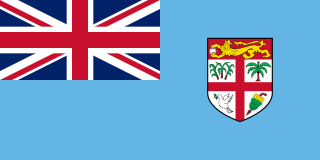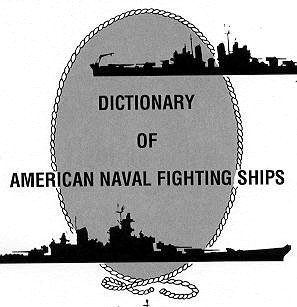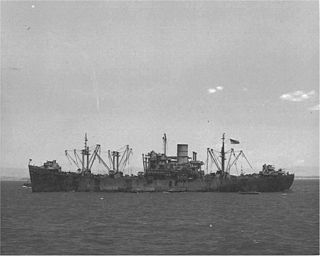
USS Elizabeth C. Stanton (AP-69) was the lead ship of her class of Second World War United States Navy transport ships, named for the suffragist and abolitionist Elizabeth Cady Stanton.

USS Dorothea L. Dix (AP-67) was a transport ship of the United States Navy named for Dorothea Dix (1802–1887).

USS Arthur Middleton (AP-55/APA-25) was a transport launched as the commercial cargo/passenger ship African Comet serving in the United States Navy during World War II. The ship, along with later sister ships SS African Meteor and SS African Planet, was at the time the largest all welded passenger/cargo ship. The ships, of 9,000 GRT and varying only in interior decorations, were designed for New York to South and East African service with accommodations for 116 passengers.

USS Crater (AK-70) was the lead ship of her class of converted liberty ship cargo ships in the service of the US Navy in World War II. Named after the constellation Crater, she was the only ship of the Navy to bear this name.

USS Aurelia (AKA-23) was an Artemis-class attack cargo ship. She served as a commissioned ship for 17 months. The name is Latin and means the golden one.

USS San Bernardino County (LST–1110) was an LST-542-class tank landing ship built for the United States Navy during World War II. Named for San Bernardino County, California, she was the only U.S. Naval vessel to bear the name.

USNS Harris County (T-LST-822) was an LST-542-class tank landing ship built for the United States Navy during World War II. Named for counties in Georgia and Texas, she was the only U.S. Naval vessel to bear the name.

USS Keokuk (AN-5/CM-8/CMc-6/AKN-4) was a mine and net laying ship of the United States Navy during World War II.
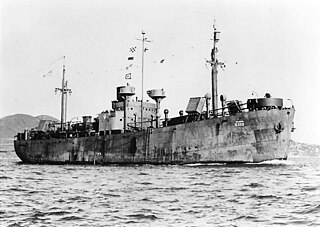
USS Pegasus was built in 1939 as SS Rita Maersk by Helsingør Jernskibs og Maskinbyggeri A/A, Helsingør, Denmark. Following the outbreak of World War II in Europe, she sailed to the United States where she operated under charter from the Maritime Commission as Rita Maersk and later as Larwin. After completing two cruises, she was laid up at Boston, Massachusetts, until 18 September 1941 when she was acquired by the United States Navy from the Maritime Commission. Renamed USS Pegasus on 15 October 1941, the cargo ship was converted for U.S. Navy use by Sullivan Drydock and Repair Corporation, New York City, and commissioned at New York on 3 December 1941, Lt. Comdr. William Fly in command.
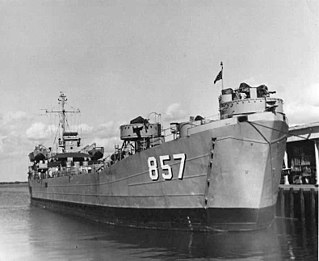
USS King County (LST-857) was an LST-542-class tank landing ship built for the United States Navy during World War II. Named after counties in Texas and Washington, she was the only U.S. Naval vessel to bear the name.
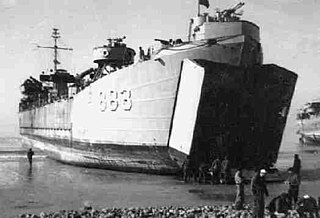
USS La Moure County (LST-883) was an LST-542-class tank landing ship built for the United States Navy during World War II. Named after La Moure County, North Dakota, she was the first of two U.S. naval vessels to bear the name.

USS Arctic (AF-7) was an Arctic-class stores ship acquired by the United States Navy shortly after World War I, which saw extensive service in World War II. She served in the dangerous Pacific Ocean, delivering food and household items to ships and bases.
USS Cygnus (AF-23) was a Cygnus-class cargo ship acquired by the U.S. Navy for service in World War II, named after the constellation Cygnus. She was responsible for delivering necessary goods and equipment to ships and stations in the war zone.

USS Mintaka (AK-94) was a Crater-class cargo ship commissioned by the US Navy for service in World War II. She was named after Mintaka, a star in the Orion constellation. Mintaka was manned by United States Coast Guard personnel and was responsible for delivering troops, goods and equipment to locations in the Asiatic-Pacific Theater.
USS Syrma (AK-134) was an Crater-class cargo ship commissioned by the U.S. Navy for service in World War II. She was responsible for delivering troops, goods and equipment to locations in the war zone.

USS Lioba (AF-36) was an Adria stores ship stores ship acquired by the U.S. Navy for service in World War II. Her task was to carry stores, refrigerated items, and equipment to ships in the fleet, and to remote stations and staging areas.
USS Laurentia (AF-44) was an Adria stores ship acquired by the U.S. Navy for service in World War II. Her task was to carry stores, refrigerated items, and equipment to ships in the fleet, and to remote stations and staging areas.
USS Ammonusuc (AOG-23) was a Mettawee-class gasoline tanker acquired by the U.S. Navy for the dangerous task of transporting gasoline to warships in the fleet, and to remote Navy stations.

USS Sheridan (APA-51) was an Ormsby-class attack transport that served with the US Navy during World War II.

USS Timbalier (AVP-54) was a Barnegat-class seaplane tender of the United States Navy. She was commissioned shortly after the end of World War II, and served between 1946 and her decommissioning in 1954. She later saw commercial service as the Greek cruise ship MV Rodos.




